| Weight | 1 lbs |
|---|---|
| Dimensions | 9 × 5 × 2 in |
| host | mouse |
| isotype | IgG1 |
| clonality | monoclonal |
| concentration | 1 mg/mL |
| applications | ICC/IF, WB |
| reactivity | Tumor Necrosis Factorα |
| available sizes | 200 µg |
mouse anti-Tumor Necrosis Factor α monoclonal antibody (2C8) 2903
$314.00
Antibody summary
- Mouse monoclonal to Tumor Necrosis Factor α
- Suitable for: ELISA,IHC
- Isotype: IgG1
- 200 µg
mouse anti-Tumor Necrosis Factor α monoclonal antibody (2C8) 2903
| antibody |
|---|
| Tested applications IHC,IHC,ELISA |
| Recommended dilutions These antibodies may be used in immunoassays or in immunohisto- chemistry to detect and/or quantitate TNFa. 21301 and 21302 may be used in biological assays to inhibit activity of TNFa. Other applications are under investigation. |
| Immunogen Recombinant human TNFa. |
| Size and concentration 200µg and lot specific |
| Form liquid |
| Storage Instructions These antibodies are stable for at least one (1) year at -20°C to -70°C. Store product in appropriate aliquots to avoid multiple freeze-thaw cycles. |
| Storage buffer PBS containing 0.1% NaN3 |
| Purity protein affinity purification |
| Clonality monoclonal |
| Isotype IgG1 |
| Compatible secondaries goat anti-mouse IgG, H&L chain specific, peroxidase conjugated polyclonal antibody 5486 goat anti-mouse IgG, H&L chain specific, biotin conjugated, Conjugate polyclonal antibody 2685 goat anti-mouse IgG, H&L chain specific, FITC conjugated polyclonal antibody 7854 goat anti-mouse IgG, H&L chain specific, peroxidase conjugated polyclonal antibody, crossabsorbed 1706 goat anti-mouse IgG, H&L chain specific, biotin conjugated polyclonal antibody, crossabsorbed 1716 goat anti-mouse IgG, H&L chain specific, FITC conjugated polyclonal antibody, crossabsorbed 1721 |
| Isotype control Mouse monocolonal IgG1 - Isotype Control |
| target relevance |
|---|
| Protein names Tumor necrosis factor (Cachectin) (TNF-alpha) (Tumor necrosis factor ligand superfamily member 2) (TNF-a) [Cleaved into: Tumor necrosis factor, membrane form (N-terminal fragment) (NTF); Intracellular domain 1 (ICD1); Intracellular domain 2 (ICD2); C-domain 1; C-domain 2; Tumor necrosis factor, soluble form] |
| Gene names TNF,TNF TNFA TNFSF2 |
| Protein family Tumor necrosis factor family |
| Mass 25644Da |
| Function FUNCTION: Cytokine that binds to TNFRSF1A/TNFR1 and TNFRSF1B/TNFBR. It is mainly secreted by macrophages and can induce cell death of certain tumor cell lines. It is potent pyrogen causing fever by direct action or by stimulation of interleukin-1 secretion and is implicated in the induction of cachexia, Under certain conditions it can stimulate cell proliferation and induce cell differentiation. Impairs regulatory T-cells (Treg) function in individuals with rheumatoid arthritis via FOXP3 dephosphorylation. Up-regulates the expression of protein phosphatase 1 (PP1), which dephosphorylates the key 'Ser-418' residue of FOXP3, thereby inactivating FOXP3 and rendering Treg cells functionally defective (PubMed:23396208). Key mediator of cell death in the anticancer action of BCG-stimulated neutrophils in combination with DIABLO/SMAC mimetic in the RT4v6 bladder cancer cell line (PubMed:16829952, PubMed:22517918, PubMed:23396208). Induces insulin resistance in adipocytes via inhibition of insulin-induced IRS1 tyrosine phosphorylation and insulin-induced glucose uptake. Induces GKAP42 protein degradation in adipocytes which is partially responsible for TNF-induced insulin resistance (By similarity). Plays a role in angiogenesis by inducing VEGF production synergistically with IL1B and IL6 (PubMed:12794819). Promotes osteoclastogenesis and therefore mediates bone resorption (By similarity). {ECO:0000250|UniProtKB:P06804, ECO:0000269|PubMed:12794819, ECO:0000269|PubMed:16829952, ECO:0000269|PubMed:22517918, ECO:0000269|PubMed:23396208}.; FUNCTION: The TNF intracellular domain (ICD) form induces IL12 production in dendritic cells. {ECO:0000269|PubMed:16829952}. |
| Subellular location SUBCELLULAR LOCATION: Cell membrane {ECO:0000269|PubMed:16829952}; Single-pass type II membrane protein {ECO:0000269|PubMed:16829952}.; SUBCELLULAR LOCATION: [Tumor necrosis factor, membrane form]: Membrane; Single-pass type II membrane protein.; SUBCELLULAR LOCATION: [Tumor necrosis factor, soluble form]: Secreted {ECO:0000269|PubMed:23552949}.; SUBCELLULAR LOCATION: [C-domain 1]: Secreted.; SUBCELLULAR LOCATION: [C-domain 2]: Secreted. |
| Structure SUBUNIT: Homotrimer. Interacts with SPPL2B. {ECO:0000269|PubMed:16829951}. |
| Post-translational modification PTM: The soluble form derives from the membrane form by proteolytic processing. The membrane-bound form is further proteolytically processed by SPPL2A or SPPL2B through regulated intramembrane proteolysis producing TNF intracellular domains (ICD1 and ICD2) released in the cytosol and TNF C-domain 1 and C-domain 2 secreted into the extracellular space. {ECO:0000269|PubMed:16829951, ECO:0000269|PubMed:16829952, ECO:0000269|PubMed:9034191}.; PTM: The membrane form, but not the soluble form, is phosphorylated on serine residues. Dephosphorylation of the membrane form occurs by binding to soluble TNFRSF1A/TNFR1. {ECO:0000269|PubMed:10205166, ECO:0000269|PubMed:8597870}.; PTM: O-glycosylated; glycans contain galactose, N-acetylgalactosamine and N-acetylneuraminic acid. {ECO:0000269|PubMed:8631363}.; PTM: [Tumor necrosis factor, soluble form]: The soluble form is demyristoylated at Lys-19 and Lys-20 by SIRT6, promoting its secretion. {ECO:0000269|PubMed:23552949}. |
| Involvement in disease DISEASE: Psoriatic arthritis (PSORAS) [MIM:607507]: An inflammatory, seronegative arthritis associated with psoriasis. It is a heterogeneous disorder ranging from a mild, non-destructive disease to a severe, progressive, erosive arthropathy. Five types of psoriatic arthritis have been defined: asymmetrical oligoarthritis characterized by primary involvement of the small joints of the fingers or toes; asymmetrical arthritis which involves the joints of the extremities; symmetrical polyarthritis characterized by a rheumatoid like pattern that can involve hands, wrists, ankles, and feet; arthritis mutilans, which is a rare but deforming and destructive condition; arthritis of the sacroiliac joints and spine (psoriatic spondylitis). {ECO:0000269|PubMed:12746914}. Note=Disease susceptibility is associated with variants affecting the gene represented in this entry.; DISEASE: Immunodeficiency 127 (IMD127) [MIM:620977]: An autosomal recessive immunologic disorder characterized by increased susceptibility to pulmonary infection with Mycobacterium tuberculosis. Affected individuals develop recurrent pulmonary tuberculosis, but have no adverse reaction to live BCG vaccination. {ECO:0000269|PubMed:39198650}. Note=The disease may be caused by variants affecting the gene represented in this entry. |
| Target Relevance information above includes information from UniProt accession: P01375 |
| The UniProt Consortium |
Data
| No results found |
Publications
| pmid | title | authors | citation |
|---|---|---|---|
| We haven't added any publications to our database yet. | |||
Protocols
| relevant to this product |
|---|
| Western blot IHC ICC |
Documents
| # | SDS | Certificate | |
|---|---|---|---|
| Please enter your product and batch number here to retrieve product datasheet, SDS, and QC information. | |||
Only logged in customers who have purchased this product may leave a review.
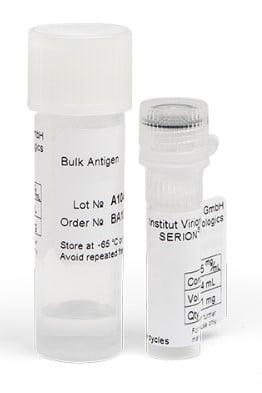
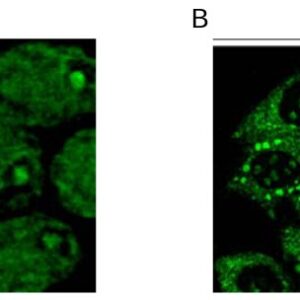

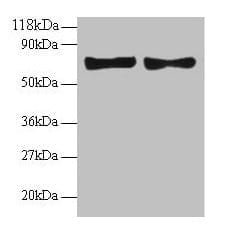
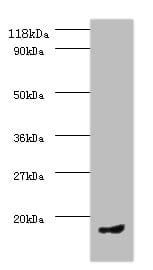

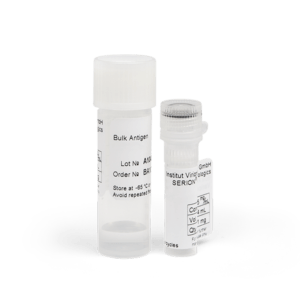

Reviews
There are no reviews yet.